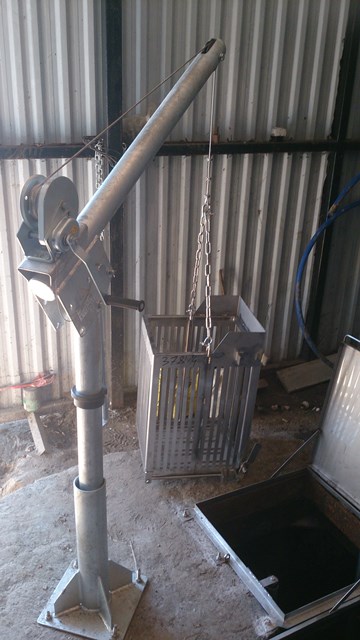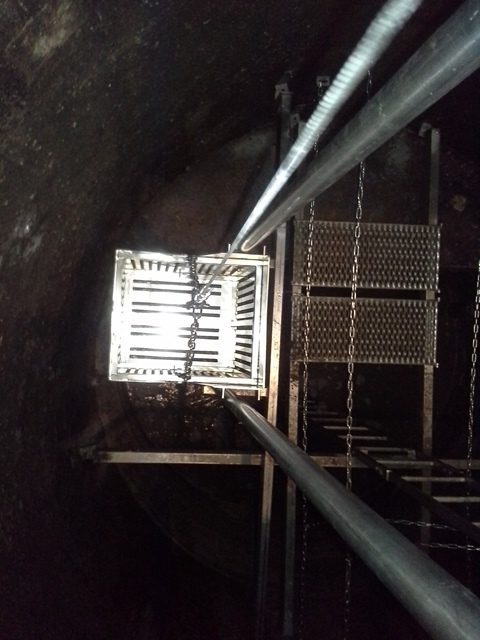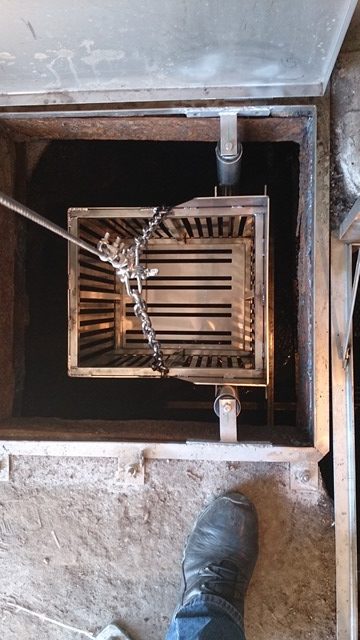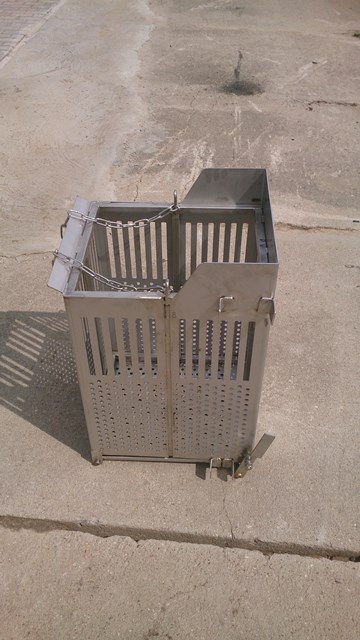The use of manual basket grates
Manual basket grates, sometimes also called sieves, are used to trap rubbish at the inlet to the pumping station. This is due to the fact that, in addition to the typical contents of domestic waste water, the medium flowing into the pumping station carries objects that users recklessly throw into the sewage system, and which can contribute to clogging or damage to pumps and the pumping system. It is not uncommon for bottles, pieces of wood, stones, rags, mops, wires, etc. to land in the grates. The use of grates in these situations is essential.
Advantages and disadvantages of using manual basket grates
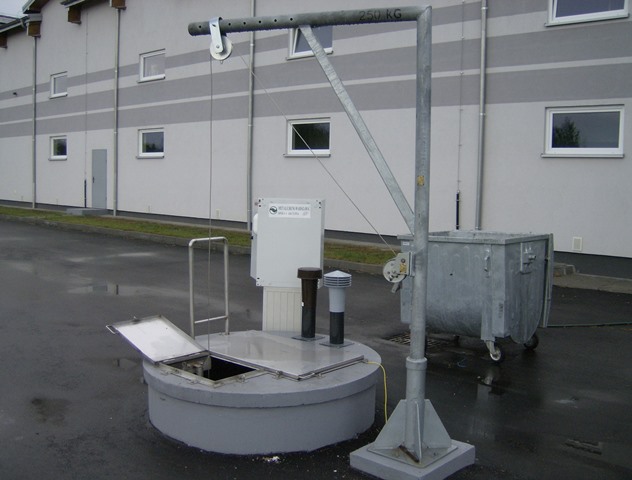
- The biggest advantage of manual basket grates is undoubtedly pump protection, so that the impeller and components in contact with the medium are not exposed to the impact of large stones, wrapping fibrous materials or blocking the inlet.
- Our grates gratings are usually small size and do not require a large investment, as long as the size of the tank and the location of the inflow allow it, our company installs such solutions for customers in tanks from 1500mm inside diameter.
- Manual basket grates manufactured by Metalchem-Warszawa S.A. are pulled out after two rails, which allows you to easily raise and lower them.
- The bottom opening allows the bin to be emptied directly into the container or on the wheelbarrow, without the hassle of turning / curving the grates.
- For many years of production and gathering experience, our grates have evolved depending on the needs of customers, at the moment we most often use grates made of 304 stainless steel, laser cut, properly bent and welded. Thanks to this, we obtain the desired shapes and parameters of the gratings.
- Depending on the client’s needs, we are able to adjust the mesh size of the grille so that it catches the most troublesome wastewater contents.
- Hand grates are usually pulled out using davits with a manual winch, and due to their low weight, they do not require special UDT permits.
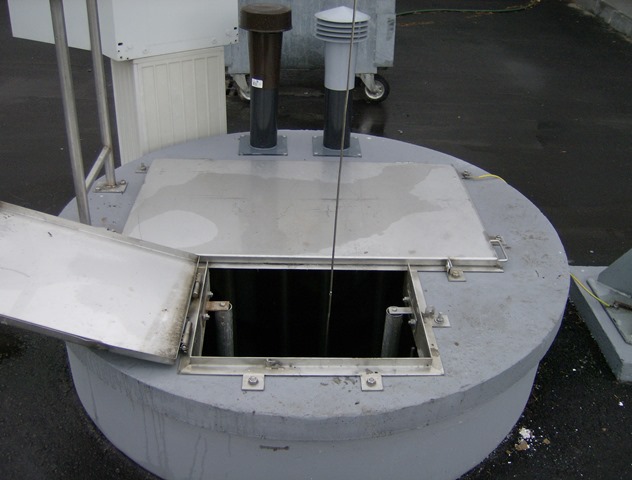
Pumping station with a grate 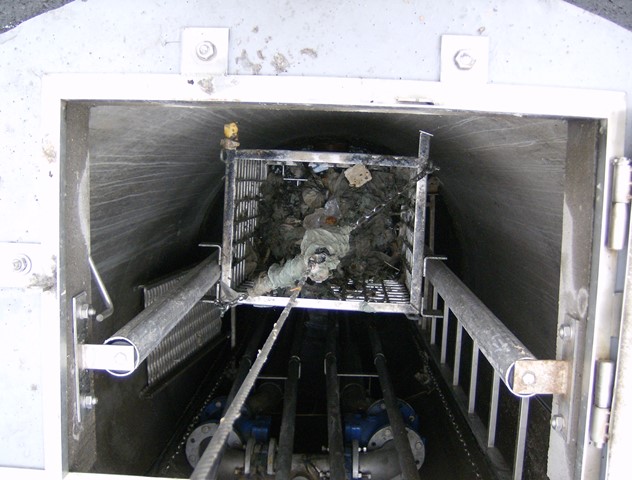
Basket in inlet 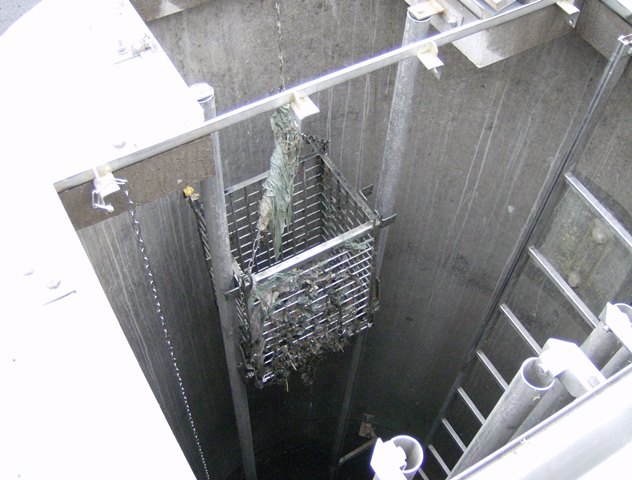
Rails for lift 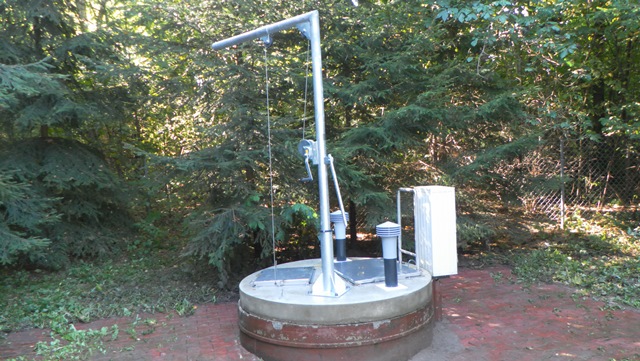
Davit + Basket
The disadvantages of manual basket gratings are their limited capacity and the need to operate (pulling out and emptying) with a frequency appropriate for the time of their filling, for some it takes a month for others 2-3 days. Everything depends on the “sewage culture”.
Manual or automatic gratings?
Can manual basket grates be an alternative to automatic grates – well definitely not. Manual basket grates are designed to protect pumps and the discharge system in a pumping station and not for complete mechanical wastewater treatment. Manual and automatic grilles are designed for completely different tasks and should not be used interchangeably. Manual grates require constant supervision of the operator and frequent undertaking of his activities, therefore they should be used only in places where the garbage is extremely high or the parameters of the pumping system are very sensitive to clogging (e.g. small pump passes or pipeline diameters e.g. Dn50-Dn80 ).
Automatic gratings are used on large main pumping stations, on or immediately before sewage treatment plants, where they perform the role of mechanical wastewater treatment and working in automatic mode without requiring constant service on the part of the user.

